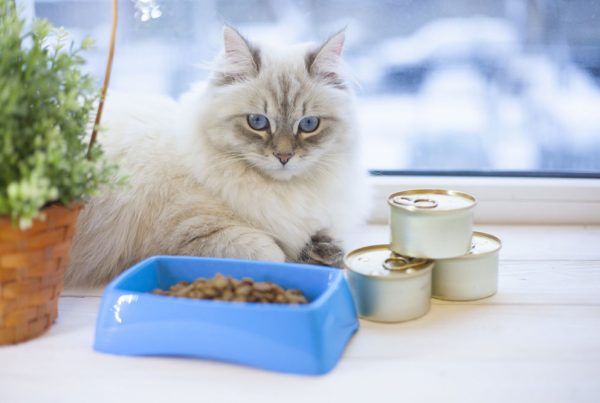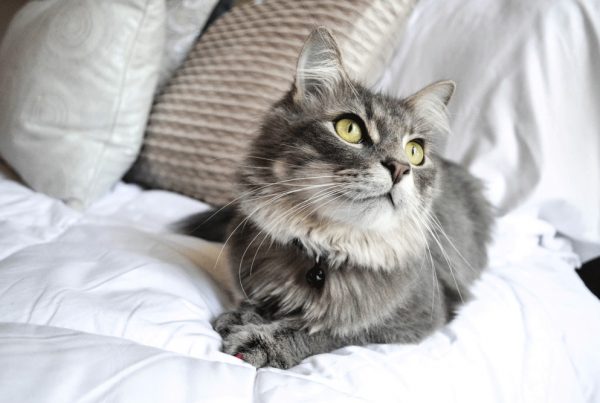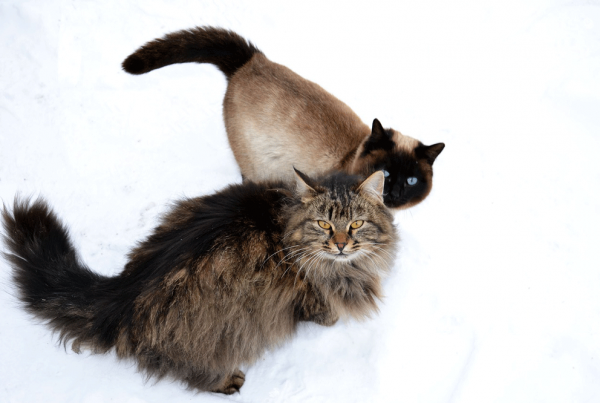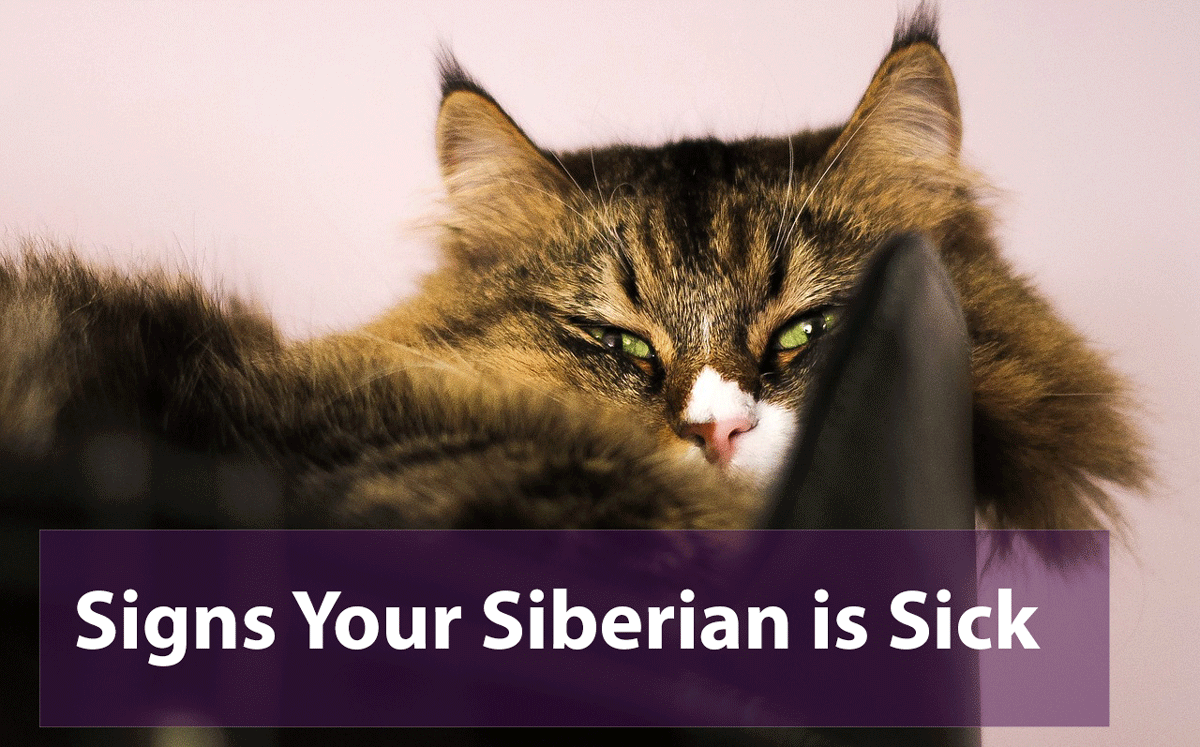
Cats instinctively try to hide their pain or sickness; sick animals in the wild are often easy targets and therefore in more danger. Knowing to look for certain signs of illness in your Siberian can be the difference between life and death.
Remember, when in doubt always call or see a vet. While you may be able to wait it out to see if problems persist or progress, certain illnesses such as poisoning or lack of eating can quickly result in death.
Dehydration
This is common in cats that are ill. See if your cat is dehydrated by gently pulling the skin near the shoulder blades upward and then letting go. The skin should go back down immediately to how it was before. If it continues to stay tented up, it’s usually a sign of dehydration which is reason to see a vet right away.
Weight Loss
Sudden weight loss can be a sign of metabolic disease such as diabetes or hyperthyroidism, especially if your cat was previously obese. Run your hands along their sides to see how much their ribs or spine are protruding.
Vomiting
Even though vomiting is a clear sign that something is wrong, it’s still usually unclear if this is caused by poisoning, blockage or something else. While it might be okay to wait a bit to see if the sickness clears itself up, it’s always better to err on the side of seeing a vet especially since poisoning or blockage can quickly result in death.
Unusual Breathing and Coughing
Breathing problems can cause a cat to lay in unusual positions or have a distended chest. Panting, shallow breathing or mouth breathing can be a sign of lung or airway problems, especially if it’s combined with blueish gums.
Similarly, coughing can be a sign of obstructions such as hairballs or ingested items that are too large. It can also be a sign of allergies, asthma, respiratory disease or lung disease.
Subtle changes in behavior
Sometimes just slight differences in the way your cat sits, how high they lift their head, how they carry their tails or move around can be a sign something is off. Unwell cats are usually more lethargic than usual and may sleep more. Cats will also often sit in a hunched position or hide when they’re not feeling well.
Remember, cats are trying not to show that they’re sick or injured, so trust your intuition.
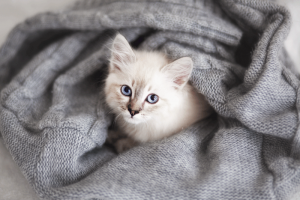 Too Much or Too Little Grooming
Too Much or Too Little Grooming
Cats that are not feeling well may neglect to groom themselves. Greasy, matted hair and dandruff are signs of lack of grooming as well as a change in the shine of the coat.
Alternatively, cats might groom excessively if they have fleas, ringworm, mites, allergies, or pain from some disease such as arthritis. Bald spots may appear from excessive grooming in one area.
See more on shedding in Siberians here.
Changes in Appetite and Thirst
Increased or decreased eating and drinking, especially relative to each other can be a sign of specific illness.
Liver or kidney disease can cause decreased appetite but increased thirst, while diabetes and hyperthyroidism can cause increase eating and drinking. Cats with dental issues may seem like they have decreased appetite, but they may just be experiencing pain from eating.
It can be a major cause for concern if your cat hasn’t eaten in over 24 hours as this can cause fatty liver disease which can quickly result in death. See a vet immediately if you notice this in your cat.
Eye Changes
Constricted (smaller) pupils, bloodshot eyes, green or yellow discharge, or droopy eyelids are all signs of potential eye issues. Dilated (larger) pupils or squinting can be a sign of pain elsewhere in the body.
Litter Box Changes
Diarrhea or constipation can be signs of digestive issues, and while diarrhea is usually easy to detect, constipation can be more difficult. Look for hard, dry stools as signs for constipation, which can be a sign of kidney issues. Likewise, decreased urination (especially through frequent, strained attempts) can be a sign of bladder or urinary problems, and cats may also lick their genitals.
Increased urination can also be a sign of kidney problems as well as liver disease or diabetes.
Check the Gum, Skin or Eye Color
Gums are naturally a darker pink in cats, and although their skin color may vary you can still see signs of off-color in both, including even the eyes.
- Pale – might be a sign of anemia
- Tinted yellow – could be a sign of jaundice, liver disease or failure
- Tinted blue – lack of oxygen
- Bright red – overheating or carbon monoxide poisoning
Purring
Although purring is usually a sign of happiness and comfort, it can also indicate your cat is in pain. If any other questionable symptoms of illness are present with the purring, then it could be a sign of problems.
Temperature Outside the Normal Range
A normal temperature range for cats is between 99.5 and 102.5 degrees Fahrenheit. Anything above or below that is unusual and temperatures above 105 degrees or below 96 degrees is reason to see a vet.
You can test your cat’s temperature by inserting a lubricated rectal thermometer 1 – 1.5 inches into the cat’s rectum.
Bad Breath
Bad breath in your cat might be a caused by buildup of bacteria in the mouth caused by dental disease or more serious issues such as digestive tract issues, respiratory issues, liver disease or kidney problems.


